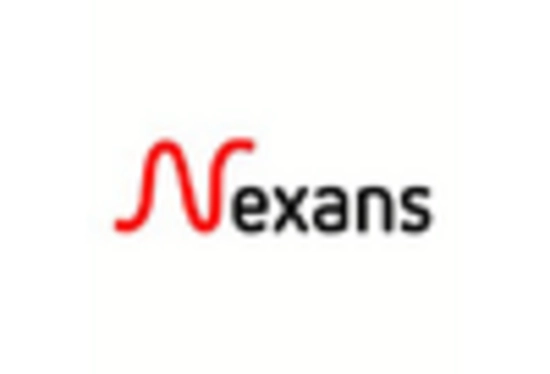Regulatory Support and Standards
The Composite Insulator Market benefits from regulatory support and the establishment of standards that promote the use of advanced materials in electrical applications. Governments and regulatory bodies are increasingly recognizing the advantages of composite insulators, such as their resistance to environmental degradation and improved safety features. This recognition is leading to the formulation of policies that encourage the adoption of composite materials in new projects. Additionally, compliance with international standards for electrical safety and performance is becoming a prerequisite for market entry, further driving the demand for composite insulators. As regulations evolve, the Composite Insulator Market is likely to see enhanced growth opportunities.
Sustainability Initiatives Driving Demand
The Composite Insulator Market is increasingly influenced by sustainability initiatives that prioritize eco-friendly materials and practices. As industries and governments commit to reducing carbon footprints, the demand for composite insulators, which are often made from recyclable materials, is likely to rise. This shift aligns with global efforts to enhance energy efficiency and reduce waste in electrical infrastructure. Moreover, composite insulators typically have a longer lifespan compared to traditional ceramic insulators, which contributes to lower lifecycle emissions. The market is expected to see a notable increase in demand, with estimates suggesting that sustainable practices could account for a significant portion of the market share by 2030.
Increased Investment in Renewable Energy Sources
The Composite Insulator Market is poised for growth due to increased investment in renewable energy sources. As countries strive to transition to cleaner energy, the demand for efficient transmission systems to connect renewable energy projects, such as wind and solar farms, is rising. Composite insulators are particularly well-suited for these applications due to their lightweight nature and resistance to harsh environmental conditions. Recent reports indicate that investments in renewable energy are expected to exceed 2 trillion dollars by 2030, creating a substantial market for composite insulators. This trend not only supports the growth of the Composite Insulator Market but also aligns with global sustainability goals.
Growing Energy Demand and Infrastructure Development
The Composite Insulator Market is significantly impacted by the growing energy demand and the corresponding need for infrastructure development. As urbanization and industrialization continue to expand, the requirement for reliable and efficient power transmission systems becomes paramount. Composite insulators, known for their lightweight and high-performance characteristics, are increasingly being adopted in new transmission projects. According to recent data, the global energy demand is projected to increase by 25% by 2040, necessitating substantial investments in electrical infrastructure. This trend is likely to drive the Composite Insulator Market, as utilities seek to upgrade aging infrastructure and meet the rising energy needs.
Technological Advancements in Composite Insulator Market
The Composite Insulator Market is experiencing a surge in technological advancements that enhance the performance and reliability of insulators. Innovations in materials, such as the development of polymer-based composites, are leading to insulators that are lighter, more durable, and resistant to environmental stressors. These advancements are crucial as they allow for longer spans between towers, reducing the overall cost of transmission lines. Furthermore, the integration of smart technologies into insulator design is enabling real-time monitoring of insulator conditions, which can prevent failures and improve maintenance strategies. As a result, the Composite Insulator Market is poised for growth, with projections indicating a compound annual growth rate of approximately 6% over the next five years.


















Leave a Comment